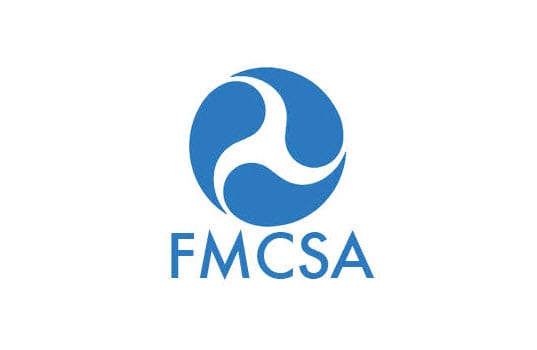CVSA-certified enforcement personnel will conduct roadside inspections on commercial motor vehicles (CMVs) as part of the Commercial Vehicle Safety Alliance’s (CVSA) Brake Safety Week, Aug 21-27, to identify and remove CMVs with critical brake violations from our roadways and to call attention to the dangers of faulty brake systems.
Properly functioning brake systems are crucial to safe CMV operation. Brakes must be routinely inspected and carefully and consistently maintained so they operate and perform to the manufacturer’s specifications throughout the life of the vehicle. Improperly installed or poorly maintained brake systems can reduce braking efficiency, posing serious risk to public safety on our roadways.
Data and research are clear:
According to the U.S Department of Transportation’s Federal Motor Carrier Safety Administration’s Large Truck Crash Causation (LTCC) Study, 32.7 percent of large trucks with pre-crash violations had brake problems. Brake-related violations comprised the largest percentage of out-of-service vehicle violations cited during last year’s International Roadcheck: https://www.cvsa.org/news/2021-roadcheck-results/
The LTCC Study’s relative risk analysis indicated that large trucks involved in a crash where the braking capacity of the truck was critical were 50 percent more likely to have a brake violation than were trucks involved in crashes where the truck’s braking capacity was not critical. According to the LTCC Study, of the trucks involved in brake-critical crashes, 45.5 percent had brake violations, compared with 29.9 percent of trucks involved in crashes of the same type where the braking was not relevant.
Results from last year’s Brake Safety Day found that 20.9 percent of all inspections conducted during that one-day brake safety initiative resulted in a CMV being placed out of service for brake-related violations.
View last year’s Brake Safety Week results.
Brake Safety Week aims to reduce the number of crashes caused by poorly maintained braking systems on CMVs by conducting roadside mechanical fitness inspections and removing dangerous vehicles from our roadways. In addition to inspections and enforcement, outreach efforts by law enforcement agencies to educate drivers, mechanics, owner-operators, and others on the importance of proper brake maintenance, operation and performance are integral to the success of the safety initiative.
During Brake Safety Week, inspectors will primarily conduct the North American Standard Level I Inspection, which is a 37-step procedure that includes an examination of driver operating requirements and vehicle mechanical fitness. Inspections conducted will include inspection of brake-system components to identify loose or missing parts; air or hydraulic fluid leaks; defective rotor conditions; measurement of pushrod travel; mismatched air chamber sizes across axles; air reservoir integrity and mounting; worn linings, pads, drums or rotors; required brake-system warning devices; and other brake-system components. Vehicles with defective or out-of-adjustment brakes will be placed out of service.
In addition, in the 12 jurisdictions using performance-based brake testing (PBBT) equipment, vehicle braking efficiency will be measured. PBBTs measure the cumulative brake force for the entire vehicle and divide it by the total vehicle weight to determine overall vehicle braking efficiency. The minimum braking efficiency for trucks is 43.5 percent, required by 393.52 of the U.S. Federal Motor Carrier Safety Regulations and the CVSA North American Standard Out-of-Service Criteria.
Brake Safety Week is part of the Operation Airbrake Program, sponsored by CVSA in partnership with the Canadian Council of Motor Transport Administrators and the U.S. Department of Transportation’s Federal Motor Carrier Safety Administration.
What You May Not Know About Brake Systems and Inspections
- Are automatic brake adjusters required?
- How do you verify that your ABS is working?
- What is your regulation brake stroke limit?
- How to identify chaffed or worn hoses
- What is a PBBT inspection?
Answers to all the above questions can be found by clicking on the following link:
FAQs: Brake Systems and Inspections - CVSA – Commercial Vehicle Safety Alliance
Registration Open for FMCSA Safe Driver Apprenticeship Pilot Program
The Federal Motor Carrier Safety Administration is now accepting applications for its Safe Driver Apprenticeship Pilot Program, which will allow 18–20-year-old drivers with an intrastate commercial driver’s license to operate commercial motor vehicles in interstate commerce after completing two probationary periods totaling 400 hours. The agency seeks up to 1,000 carriers and 3,000 drivers to participate on a voluntary basis in the program. The agency will monitor the safety record of the participating carriers and drivers over the pilot program, which is expected to last three years. On January 14, 2022, the FMCSA announced in a Federal Register Notice the establishment of the apprenticeship pilot program. To participate in the pilot program, motor carriers must register with the U.S. Department of Labor Registered Apprenticeship Program. In addition, carriers that would like to participate in the SDAP must complete an application for participation and submit monthly data on an apprentice’s driver activity (e.g., vehicle miles traveled, duty hours, driving hours, off-duty time, or breaks), safety outcomes (e.g., crashes, violations, and safety-critical events), and any additional supporting information (e.g., onboard monitoring systems or investigative reports from previous crashes). Also, carriers will be required to notify FMCSA within 24 hours of: (1) any injury or fatal crash involving an apprentice; (2) an apprentice receiving an alcohol-related citation in any vehicle (e.g., driving under the influence or driving while intoxicated); (3) an apprentice choosing to leave the pilot program; (4) an apprentice leaving the carrier; or (5) an apprentice failing a random or post-crash drug/alcohol test. Motor carrier applicants must not have a conditional or unsatisfactory safety rating and must meet other safety and regulatory compliance metrics. The SDAP will not authorize apprentice drivers to transport passengers or hazardous materials or operate double- or triple-trailer combinations or cargo tank vehicles. Safety performance data generated by the pilot program may be used by the agency to consider lowering the current 21-year-old minimum driving age in a future rulemaking.









